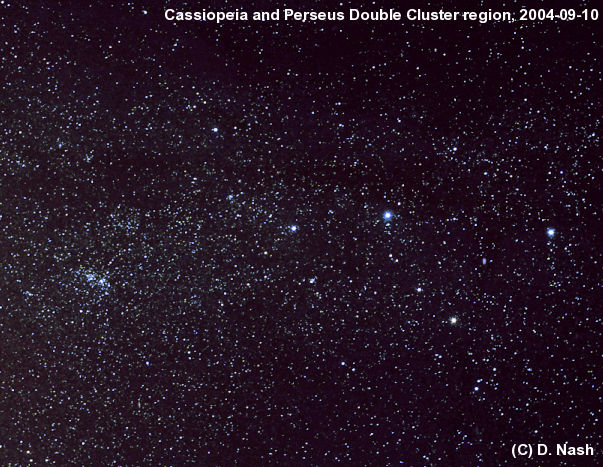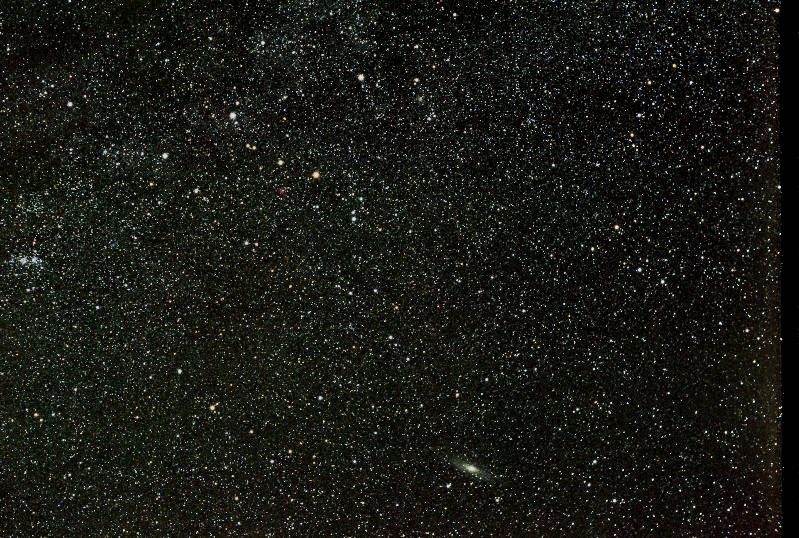| Home | ||||||
| Cassiopeia | ||||||
| HOME Best Lunar Planets Deepsky Misc Equipment Techniques Links |
| Galaxies Nebulae Star Clusters Constellations Multiple Stars |
|
The constellation of Cassiopeia, the queen. A so-called circumpolar constellation that is visible all year in the Northern hemisphere because of its proximity to the celestial pole, which it circles as the night, and the year, passes.
The Milky way passes through Cassiopeia, which like other constellations in which the milky way can be seen, has rich star fields. Cassiopeia in particular is notable for the number of open clusters it contains. |

|
|
|
This picture shows the constellation's well-known "W" shape clearly, and milky way clouds to the left, where the double cluster (actually in neighbouring constellation Perseus) is seen. Move the mouse over the picture for annotationThis picture was exposed for 20 minutes at f/5.6 using a 50mm lens on Fuji Superia X-tra 400 film. Scanned at 600dpi and processed in the Gimp. |
|
| to top | home |

|
|
|
In this very busy wider-field picture, the constellation is near the top-left. The double-cluster in Perseus is at the centre-left. This picture is interesting because below Cassiopeia is part of the constellation of Andromeda, including the famous Andromeda galaxy, one of our neighbours in galactic space. Back in the Cassiopeia region, you can see a reddish object below eta Cassiopeia (refer to the picture above for star designations). This object is NGC 281, sometimes called the Pacman nebula, after its shape in closer pictures. This picture was taken on Fuji Provia 400F film, with a 50mm lens at f/4. The exposure was 20 minutes. |
|
| to top | home |
 |
|
| All text and images copyright and may not be used without permission |
|